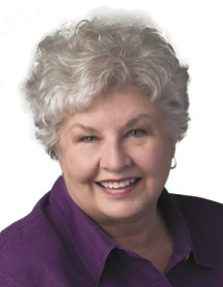
19 Feb 2015 It's all in your mind
by Vivian Lawson Hogue
In the 1960s, neurobiologist Roger Sperry found that each half of our brains has two different ways of thinking. For that he received a Nobel Prize in 1981. He said the right hemisphere controls creativity and artistry, while the left controls reading, writing, calculation and other sequential thinking. The two are intended to work together, but somehow my left half is not always on speaking terms with my right.
Most of my family is what I call both-brained, with a generous helping of math, reading and writing, but also proficient in the arts, specifically drawing, painting, music and textiles.
I am pea-brained and lean heavily to the right, choosing only those left traits that cooperate with the right.
My left-brained husband will give directions with a compass point, numbers of miles and an exit number. I point to landmarks like old houses, trees and potholes that are eligible for the National Register of Historic Places.
Most of us will never be as good at ciphering as many of our parents or grandparents. My parents could add numbers in their heads, not wasting a smidgen of pencil lead and paper. Their knowledge of Latin taught us how to spell and pronounce. Their enjoyment of music led all five of us in that direction, too.
Did I get the math ability? No, indeed. When I took college algebra for the third time, it was the last class I had to take before graduating. I promised God I would be good the rest of my life if He would let me pass it. I passed, but He has been very patient about my part of the bargain.
Math comes easy to some and in quite different ways. Many Conway natives remember Crocker Lynch, a dishwasher at Goad’s café — you know, the little eatery that was down there near the corner of Oak Street and Railroad Avenue. Crocker was a mathematical genius.
When freight trains went by, he would stand at the kitchen door and add up in his head the serial numbers on boxcars. He was called from the kitchen once to figure for a customer how much water a half-inch pipe would carry compared to a quarter-inch pipe. The customer had paid $200 for engineers for the answer, and he didn’t believe them.
Crocker gazed at the ceiling and muttered about pi and the square root for a couple of minutes and gave the customer the same answer that the $200 had paid for.
A dairy farmer learned of Crocker’s skill and hired him as his bookkeeper.
He worked a couple of weeks and went back to dishwashing because he was afraid he would make a mistake that would cost his employer money.
Crocker lived about where I-40 and Highway 65 intersect and always walked to and from work. One day he was walking home when Cleve Berry, who was noted for never getting close to the speed limit, offered him a ride. Without breaking his stride, Crocker waved and said, “No thanks. I’m in a hurry.”
Conway and Faulkner County natives have scattered into the country and world over the last 100-plus years by way of their intelligence, determination, parental upbringing, self-discipline and our schools and churches.
They have excelled in science, inventions, medicine, dance, opera, instrumental and pop music, art, drama, fashion, interior design and architecture. Considering the area’s small population and agricultural economy for most of those decades, we could have given another dimension to Mr. Sperry’s brain study.
A native of Conway, Vivian Lawson Hogue graduated from the University of Central Arkansas with a degree in art education. A retired teacher, she worked in the Conway School District for 23 years. She is editor of the Faulkner County Historical Society’s semi-annual publication, “Faulkner Facts and Fiddlings.” She can be reached at vhogue@conwaycorp.net.












